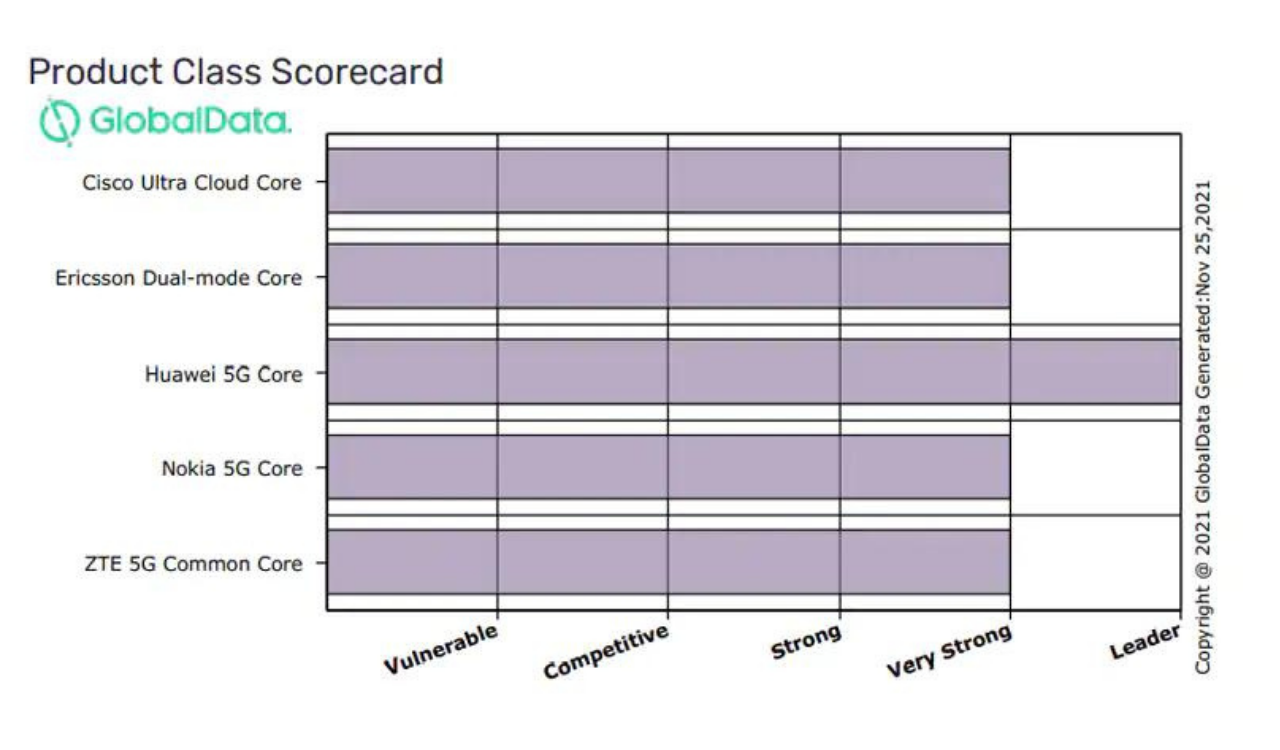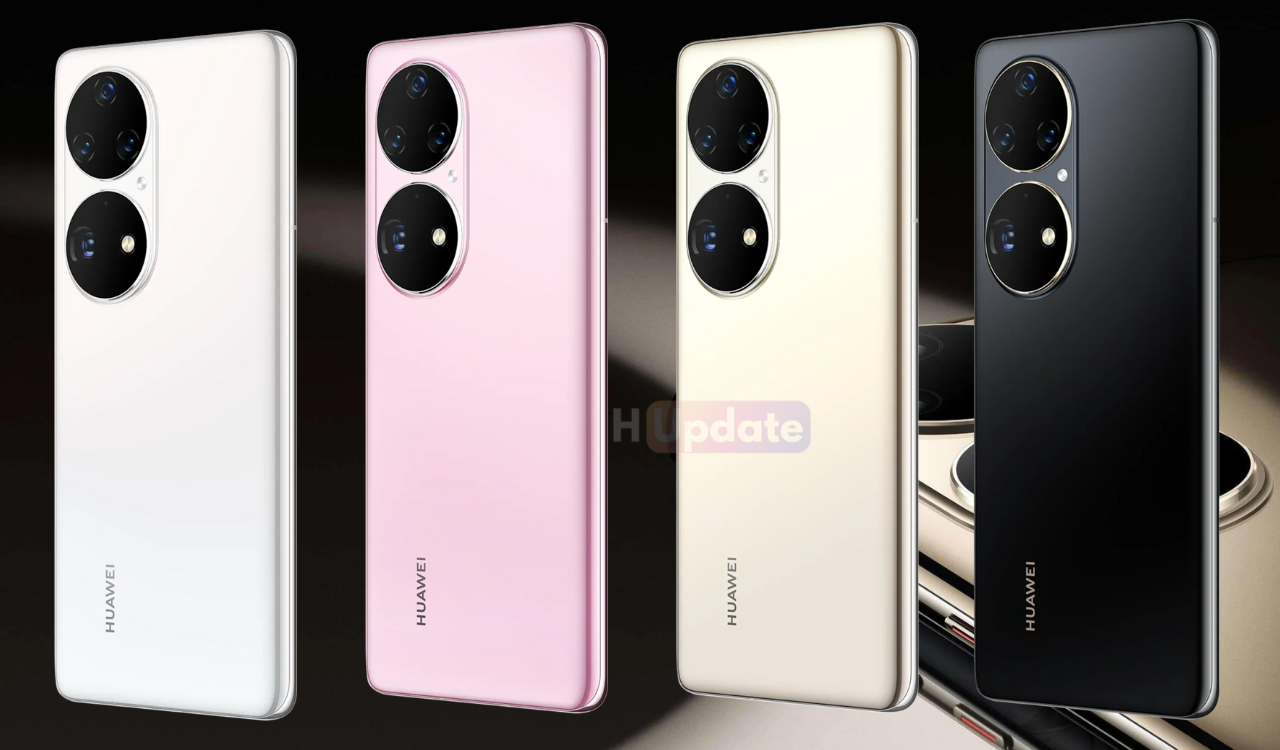Huawei 5G
GlobalData: Huawei 5G Core rated as leader

In the third week of December 2021, GlobalData released a report with the title 5G Mobile Core: Competitive Landscape Assessment. In the list, the Chinese tech giant Huawei’s 5G Core portfolio is the strongest, rated as the “leader” among all the 5G core products from the world’s mainstream telecom equipment vendors.
The report used nine criteria in total, including solution maturity, architecture, migration, and multimedia voice services, to evaluate the competitiveness of the 5G core product portfolios from mainstream telecom equipment vendors.
Huawei 5G Core, with the company’s cutting-edge technologies and extensive commercial practices, excelled in the evaluation in many dimensions, including the following:
Architecture
Huawei’s 5G Core Rock-Solid Reliability solution adopts a N-way redundancy architecture, the innovative federated databases supporting 100 million subscribers, and 64x intelligent flow control algorithm. With all these, Huawei 5G Core can provide a 99.999% reliability and enable cross-DC redundancy for a huge number of users.
Migration
Huawei has adopted the Single Packet Core (SPC) and Single Voice Core (SVC) solutions to build a fully converged data and voice network, which can provide services for 2G/3G/4G/5G NSA/5G SA subscribers on one network.
Automation
Huawei has put forward the autonomous driving network solution which relies on the telco cloud-native and infuses intelligence into the core network.
Solution maturity
Huawei 5G Core has helped China’s three major operators build the world’s largest 5G SA networks, providing services for over 100 million 5G SA subscribers.
Industry Recognition
Huawei has won the 5G Core Leadership Award together with China Mobile at 5G World Summit 2021 in September this year. For the 5GtoB landscape, Huawei has launched its 5G Core PNI-NPN Kite-like solution, which helps tailor dedicated network products and build E2E scenario-based 5G solutions to meet industry customers’ diverse needs.

Android
Astronauts took the Huawei P50 Pro to space

Recently, Chinese astronauts have taken the flagship Huawei P50 Pro to space initiated to share some selfies of up there….!! Huawei P50 Pro smartphone in space is just rock, specifically for the International Space Station (via Huawei Central). The dual camera ring design of the phone is clearly visible in the images. As a Chinese astronaut shared some pictures from the Space Station. Which showcased the P50 Pro in his hand taking the phone there.
Also, the phone is pictured within a controlled atmosphere of the space station. Take it to outer space and it will likely destroy itself with its own heat due to lack of cooling. These images might suggest that the smartphone is capable of functioning even in space, but that is unlikely. Modern smartphones are designed to be used in Earth’s atmosphere. While certain functions like the camera and touch may work. There is no chance for signal reception and calling.
The Huawei P50 Pro runs on HarmonyOS and has a 6.6-inch OLED display with 1.07 billion colors, 120Hz refresh rate, and 2700 x 1228p resolution123. It is powered by a Qualcomm Snapdragon 888 4G processor with 8 CPU cores. Also, a maximum clock speed of 2840 MHz14. It has a 4360mAh battery that supports 66W wired and 50W wireless charging1.
Additionally, it has a quad camera setup on the back with a 50MP main sensor and a 13MP selfie camera on the front1. It is dust and water-resistant up to 1.5m for 30 minutes3. Also, it measures 158.8 x 72.8 x 8.5 mm and weighs 195g235. It comes in black and gold colors.


Huawei 5G
Huawei Recognized as a Customers Choice in 2023 Gartner Peer Insights

In the Gartner Peer Insights Voice of the Customer for Primary Storage for its OceanStor Dorado all-flash storage, Huawei was recognized as a 2023 Customers’ Choice. That too with a 100% user recommendation rate and a full score of 5.0 based on 214 reviews, Huawei steal the heart of customers.
Showcasing the Huawei OceanStor Dorado all-flash storage played a part in the evaluation process. Covering industries from a wide range of economic sectors, including telecommunications, manufacturing, services, and so on, the product was reviewed by hundreds of customers worldwide in various regions.
Over 150 countries and regions including Latin America, Europe, Africa, the Middle East, and Asia-Pacific, Huawei OceanStor Dorado all-flash storage is now utilized. Where it provides reliable services to industries such as finance, telecommunications, government, and public utilities.
Huang Tao, President of Huawei All-Flash Storage Domain, is convinced.
“We are grateful for the global community’s continued support and recognition, as Huawei’s primary storage is once again regarded as a ‘Customers’ Choice’. We believe this recognition is the highest form of affirmation from our valued clients, and it serves as a driving force fueling our persistent efforts towards further improvements.”
“In our commitment to innovation, we will focus on crucial aspects such as reliability, ease of use, and security, while continuously investing in technologies to offer our clients more efficient, stable, and intelligent storage solutions that accelerate their digital transformation.”

Huawei 5G
US required more money to get rid of Huawei equipment

The cost of removing the Huawei equipment has risen since Huawei and ZTE have been declared as national security threats due to the practice of spies. The US wants to completely spare Chinese tech giant equipment from the county while campaigning to get rid of them.
The US imposed sanctions on Huawei equipment in 2019. The FCC was granted $1.9 billion in funding to help carriers replace Huawei and ZTE equipment with alternatives, in 2021. In the present year, it is estimated that the US needs more money to completely fulfill the job. i.e. another 3.08 billion dollars to bring the project to completion.
Why does America need more money to get the job done?
The US will spend a total of 5 billion dollars on infrastructure replacement if additional costs do not appear in between. The compensation is for carriers with more than two million users, in the first line. However, due to the lack of funds, the FCC decided to set priorities.
The US is also pressurizing European countries to do the same, apart from the fact that the US having a lack of funds in the same stream. So far, only Sweden and the UK have obeyed. Other countries continue to do business with Chinese companies, and currently, 41% of European 4G infrastructure relies on Huawei technology. The complete replacement of Huawei infrastructure will last until 2027 as later predicted.
What about other countries?
Following the US sublines some EU countries decided to go their own way despite the fact that the US needs more money to get rid of Huawei. Germany, Poland, Portugal, and Austria continue to use Huawei equipment for the 5G network as well.
Berlin rais hand to be self decision-maker in the line, about whose equipment it will opt for. Meanwhile, they’ll not give in to American pressure. As other the recent report disclose that the operator Vodafone in Germany alone would spend 2.8 billion euros to replace Huawei’s equipment.
















